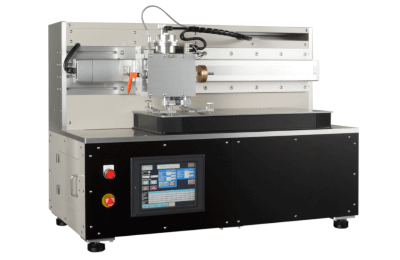What Is a Scratch Testing Service?
 Scratch testing service involves using a diamond indenter to create controlled scratches on a sample’s surface. The sample is moved at a constant speed while the load is gradually increased. This method allows for the analysis of peel load, frictional force, scratch depth, and acoustic effects during thin film fracture by examining the scratch marks.
Scratch testing service involves using a diamond indenter to create controlled scratches on a sample’s surface. The sample is moved at a constant speed while the load is gradually increased. This method allows for the analysis of peel load, frictional force, scratch depth, and acoustic effects during thin film fracture by examining the scratch marks.
Such services enable easy quantification of material properties that were previously difficult to evaluate, significantly improving material evaluation and quality assurance.
Examples of Conventional Evaluation Methods for Thin Films and Coatings
Problems:
- Test results are dependent on the operator’s condition and tools, making them unreliable.
- Lack of quantitative evaluation capabilities.
Scratch testing services address these issues, enhance quality assurance, and expedite product development through comprehensive analysis, including scratch depth, frictional force, and acoustic effect.
Features of Scratch Testing Services
Comparison of scratches by panoramic image: The service allows for quantitative comparisons based on the load at which the scratch is applied, defined as the critical load.
Applications of scratch testing services include:
- Adhesion evaluation of coatings.
- Quantitative evaluation as an alternative to pencil hardness/wool tests.
- Film adhesion evaluation instead of cycas tests.
- Surface scratch resistance evaluation.
Different types of scratch testing services, like nano scratch testing machines and micro combination testing machines, cater to various materials and load applications. The choice of service depends on the material, film thickness, and measurement objectives of different coatings.
These services can range from evaluating the adhesion of Nm-level resin coatings to base materials, and scratch resistance, to assessing the adhesion of hard coatings such as DLC coatings and conducting destructive testing of thick resin materials.